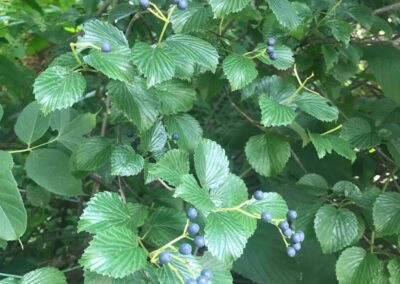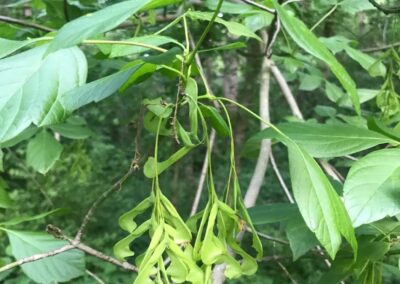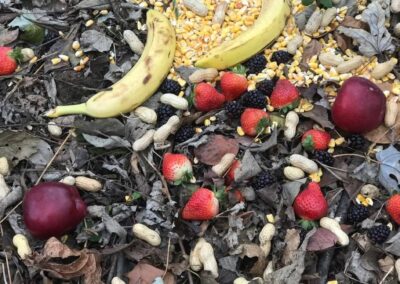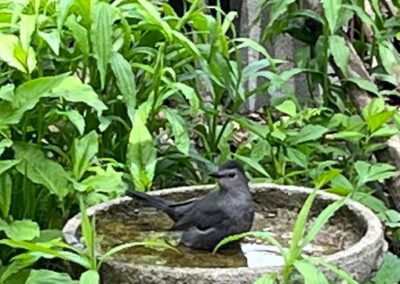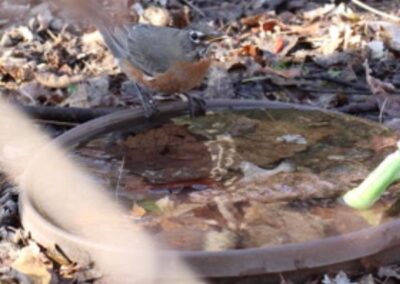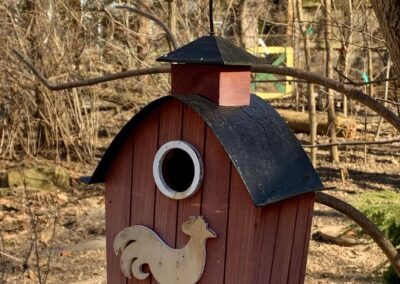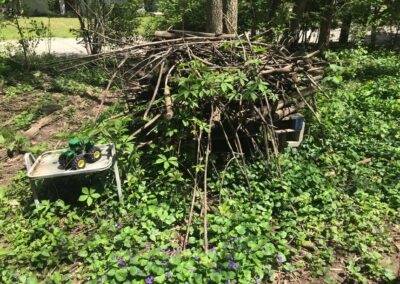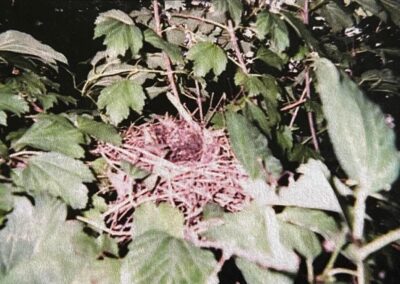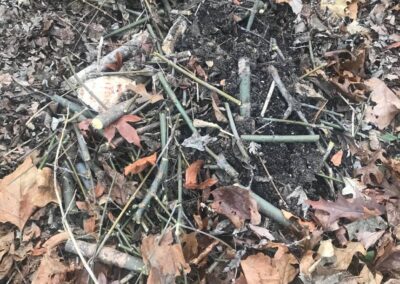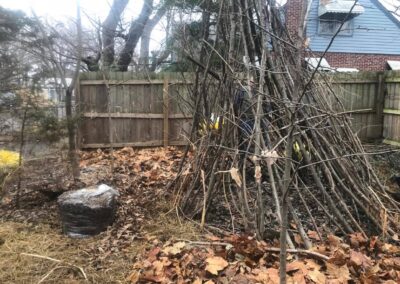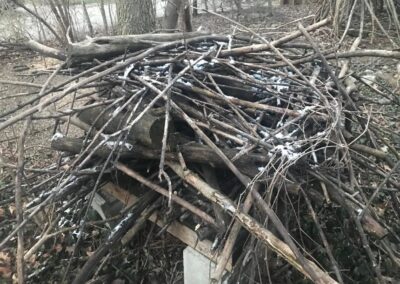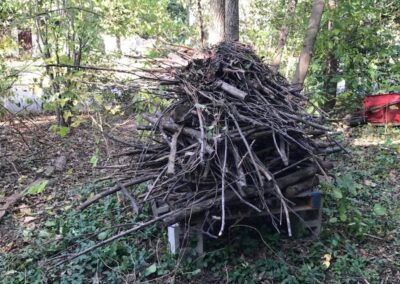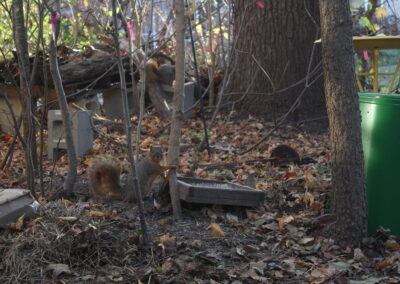PRINCIPLES AND PRACTICES
The Wildergarden Way
These are some of the principles and practices followed at the Wildergarden. They have helped it become what it is today. While we try to use these practices as much as we can, it is not always possible. These methods are based on our understanding of ecology, which is always developing. Therefore, we are always adapting practices to reflect our growing knowledge of ecology. We do not guarantee that your yard will turnout the same as Wildergarden if you use these methods. Natural growth is highly variable depending upon soil, management, and weather. Every forest fragment has site-specific characteristics, as do the built homes. The plant inventory will be different. This makes each one excitingly unique and personal.
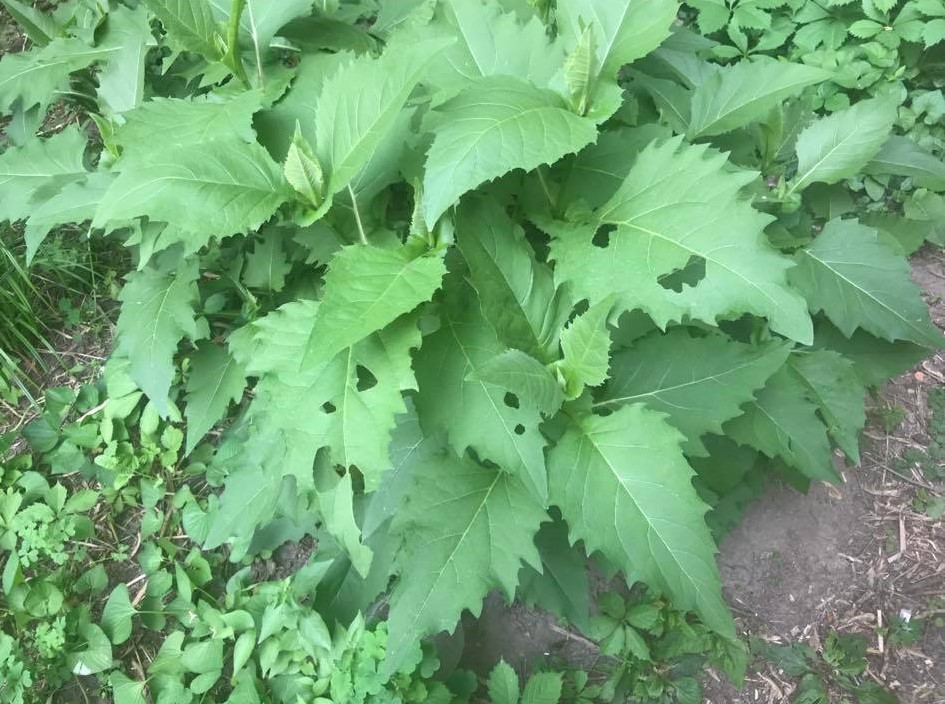
Cup plant
Insects eating on leaves is normal and usually does not damage plant health.
Planning and Sustainability
- The use of Wildergarden principles and practices is a lifestyle to be integrated into daily living and allowed to progress at a natural pace over the seasons and years ahead—measured by native tree growth and other ecological indicators.
- Regularly document, through photography and record-keeping, plant growth, soil change, human management and wildlife presence—at least once a week. Do a plant inventory.
- Never use herbicides, insecticides or other toxic materials. In rare cases of infestation, an approved Organic Materials Review Institute (OMRI) material may be used.
- View your habitat in each season from the (imagined) perspective of native plants and wildlife. What do they like?
- Only use manual tools and avoid using gasoline-powered machinery. If necessary, electric tools may be sparingly used.
Wildlife
Establish the four natural provisions of wildlife habitat: food, water, plant cover from predators and places to raise young. (National Wildlife Federation).
Food
- Grow a variety of plants with soft mast (berries, seeds) and hard mast (nuts) that allow wildlife to feed themselves.
- Supplemental feed for birds and wildlife should be vegan (nuts, seeds, fruits and vegetables), rather than animal products such as meal worms or suet.
Wildlife Thanksgiving
On the fourth Thursday of November we celebrate Wildlife Thanksgiving by placing grain, fruits and legumes on the ground, intended for our nocturnal wildlife (raccoons and opossums).
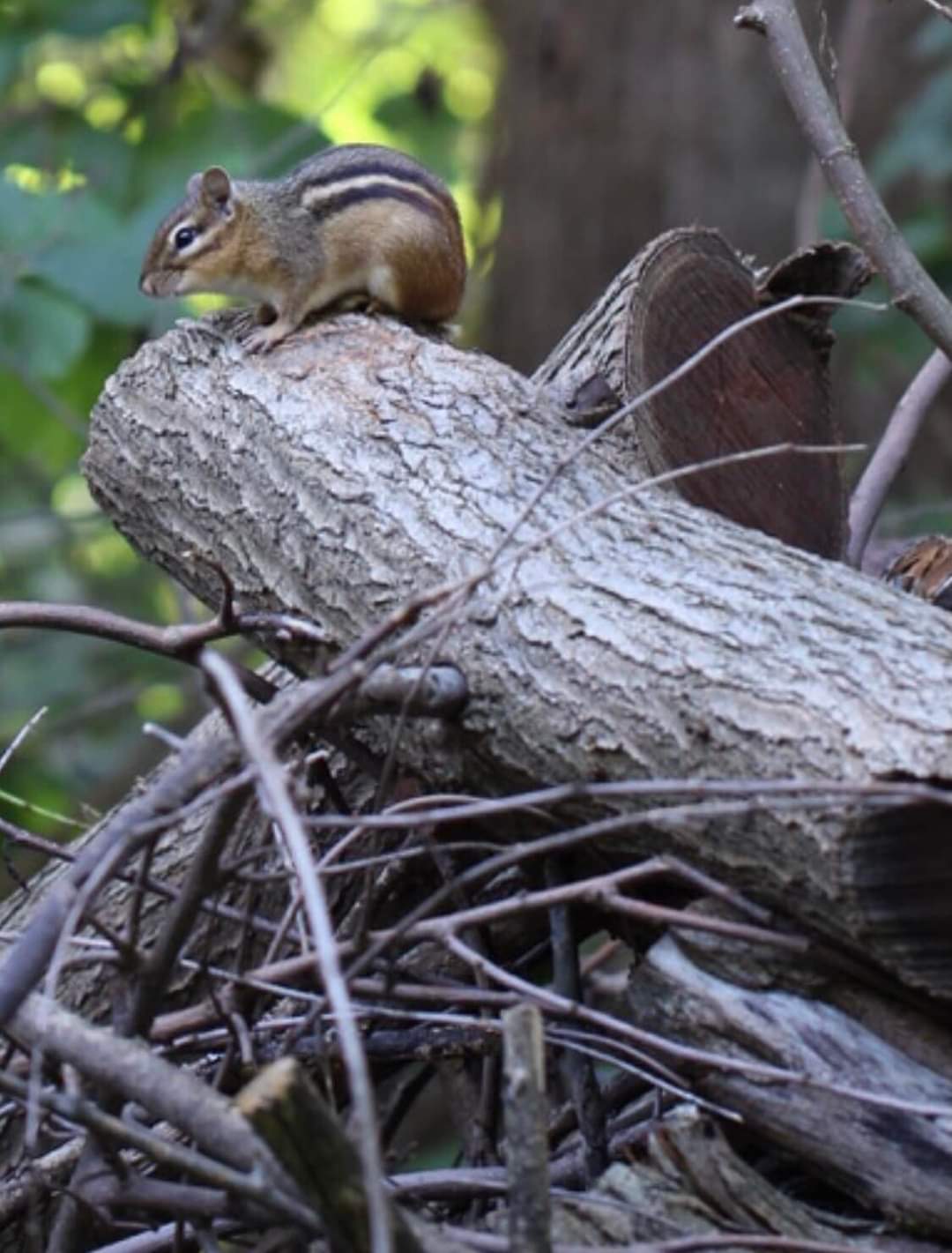
Water
Be sure to provide water pans for birds and mammals to drink from and bathe in. This is the aspect of wildlife habitat (food, water, cover and places to raise young) that tends to be overlooked by homeowners. Be generous with water to keep animals hydrated. There are many attractive bird baths and ceramic pans from which to choose, or you can make your own.
Shelter
Given the right resources, wildlife will find or build the shelter it needs. Letting trees grow, and providing plant cover and woodpiles is a great way to invite them to make a home on your property.
Making It Official
- Check out our Helpful Links for great resources on how to support the wildlife on your land.
- Once you have decided to transform your backyard into a welcoming wildlife habitat, you can go through the process of certifying your backyard habitat as a wildlife sanctuary. Click HERE to learn more!
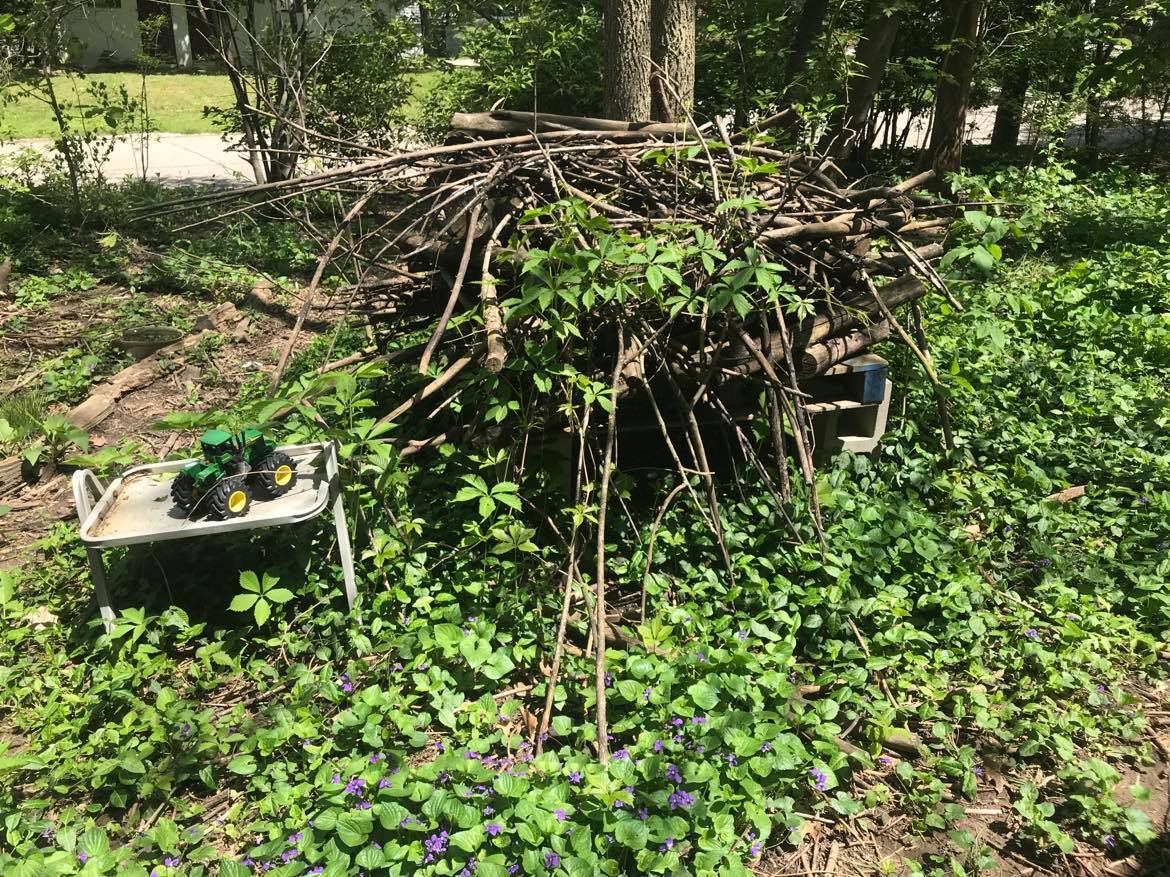
Plants and Plant Matter
- Add any site-generated leaves, roots, brush, limbs, twigs, stumps, logs to the soil and do not place them into the public waste stream (trash pickup). Use elevated brush piles for wood storage and habitat enhancement.
- Any external garden inputs, such as compost, plants, leaves, straw, wood, or rocks should be sourced within the neighborhood or county.
- Allow volunteer plants to grow and mature until they are identified by leaves, flowers and fruits, and their contribution to ecology is assessed. Then a decision can be made about keeping them.
Raised Woodpile
Elevated brush pile is storing various species’ branches. The wood will be chopped into small pieces and spread on the garden soil.
Water
- Collect rainwater runoff from buildings in rain barrels, to use in the garden.
- Maintain soil pores and organic matter in soil so that rain drops are admitted into the soil where they fall.
- Plant-litter ground cover also increases water infiltration.
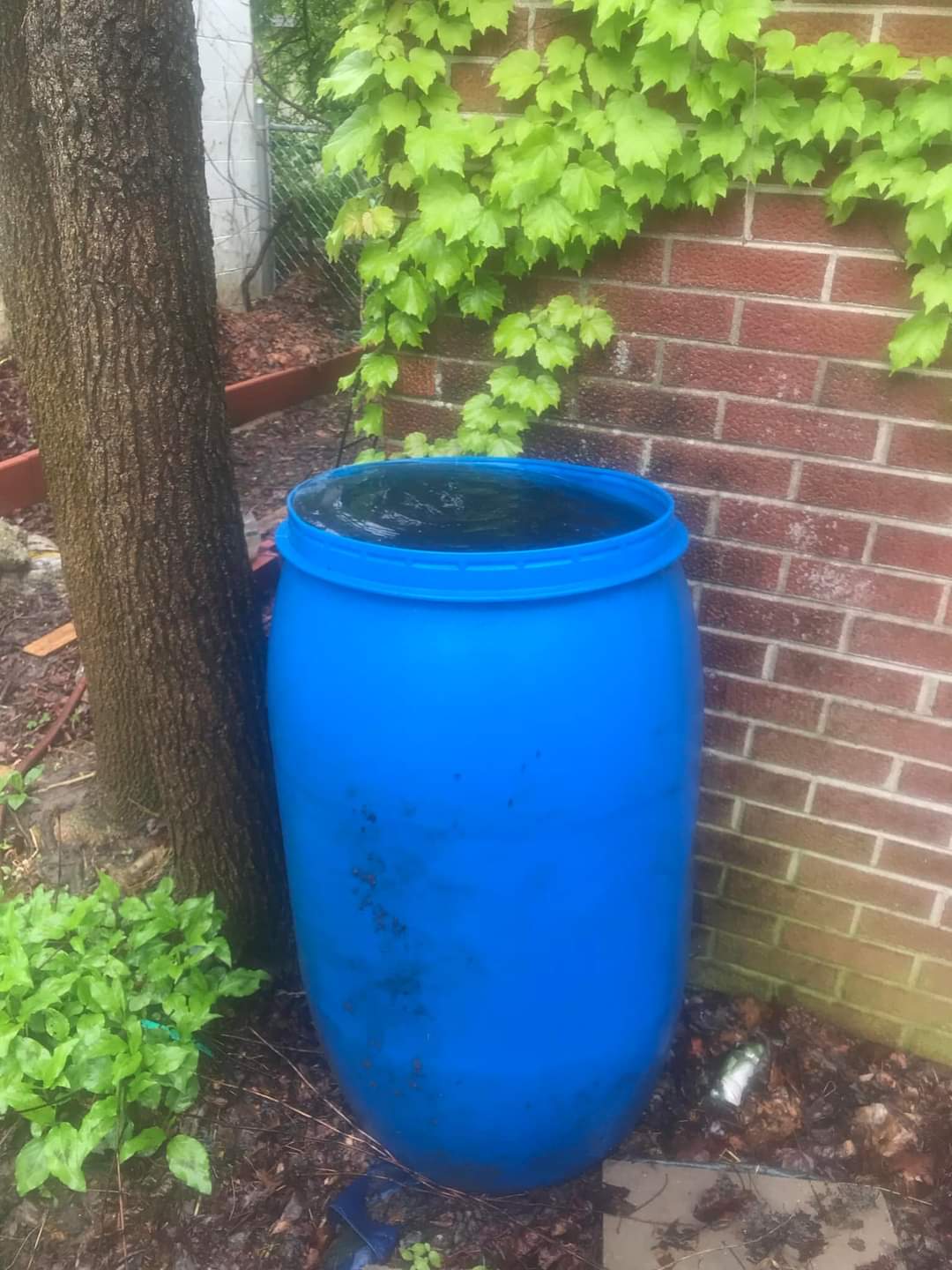

Soil
- Respect the features of soil type. Most Indiana soils were created by and for forest. WG principles are intended to be practiced on forested soil with slope of less than six percent.
- Add organic matter to enrich and build healthy soil. Do not use manufactured fertilizers.
- Keep tillage and other soil disturbance to a minimum, to allow natural soil structure to thrive. Soil aggregation is healthy soil structure formed when soil particles (sand, silt and clay) naturally bond to soil organic matter. This structure allows the soil to function as nature designed it.
- Our soil is Miami, which is the Indiana state soil. Click HERE for further information on Miami soil.
- Seek to built humus in your yard. Humus is the biological end product of organic matter decomposition in the soil. Spread plant litter evenly on the entire soil surface. Do not store plant litter in compost piles or incorporate it with tillage. For more information on humus, check out National Geographic or the USDA.
The Big Picture
Much of what we know about urban habitat restoration comes from rural residents on sustainable farms. The conservation provisions of the Food Security Act of 1985 (Public Law 99-198) initiated bold programs to protect soil and wetlands, and were modified to include farmer incentives for habitat restoration. While these environmental efforts were targeted to rural areas, they are relevant in urban residential areas, under the moniker of backyard conservation. As stated on the Natural Resources Conservation Service (NRCS) website about residential yards, “Most conservation practices are easy to use. Farmers and ranchers have been using them successfully for decades. Whether you have rural acreage, a residential yard, or a city lot, you can help protect the environment and add beauty and interest to your surroundings.” Click HERE for more information about NRCS backyard conservation programs.

